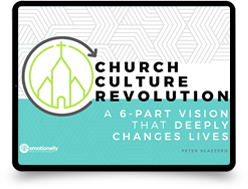I wrote a brief article recently for Mark Deymaz that will appear in a book he is writing on diverse, ethnic Churches (Zondervan). It forced me to think through our history and what we have learned. The following is most of the what I wrote:
Twenty-one years ago, when my wife and I planted New Life Fellowship, we chose Elmhurst/Corona, Queens, as a strategic location for the church due to the fact that individuals from more than 120 nations live in the area. So while we recognized the benefits of such a location and desired to bridge the racial, cultural and economic barriers for the sake of Christ, we underestimated the suffering this commitment would require for all of us of in leadership.
For instance, I soon realized that our evangelical discipleship/spiritual formation model was too superficial to bring about the kind of in-depth transformation we would need to live in authentic community. There were tensions between Asians and African Americans, Columbians and Puerto Ricans, Arabs and Jews, Filipinos and Chinese, as well as Haitians and Dominicans, to name a few.
Barriers of economic class and educational status also loomed large in our midst. For instance, educated African Americans struggled with other African Americans who embraced a “hood” mentality; and Asians, with their rich legacy of love for education, had great difficulty in embracing the large number of high-school dropouts who now attended our youth group. In addition, middle-class Latinos struggled to empathize with Latinos who remained stuck in a cycle of poverty and dependence. And Whites too struggled to embrace now being minorities, many for the first time.
We also underestimated the worldwide scope of racism based solely on the color of skin. For example, I learned that the darker one’s skin in Latin America, the generally lower he or she remained in social standing. In fact, part of the reason our Spanish congregation split in the early years was due to tensions between lighter-skinned and darker-skinned Latinos. We also had to consistently remind immigrants that they were now part of the American church. Biblically, they could not ignore the history of slavery and racism. We challenged them to participate in reconciliation efforts. Most preferred, at least initially, to ignore this call and move up the ladder of the American dream.
Key early decisions, then, enabled our church to grow into a congregation where individuals from more than sixty-five nations are involved today. We mentored peoples from a variety of cultures, focused on our common mission and remained committed to the passionate worship of Jesus. And over time, we slowly built an elder board, pastoral staff and worship team that reflected our diversity.
Yet in our case, significant breakthrough came only when we began integrating emotional health and contemplative spirituality into our discipleship model fourteen years ago.
A spiritual formation paradigm that included emotional health began, for us, with a commitment to break the power of our pasts. Like Abraham, we responded to the invitation to leave our families, cultures, races, countries behind and become part of the new family of Jesus (Mark 3:31ff). We also learned to lament our losses; like David, Job and Jeremiah. We realized that Whites, for example, needed to grieve their own losses if they were going to empathize with the losses of immigrants and minorities. And we began to value the character of loving well and brokenness as true measures of maturity, instead of knowledge, gifts or anointing.
We then called our people to leave the contemporary, consumer church model so prevalent in the West for a more radical spirituality modeled after the Desert Fathers from North Africa. We moved our membership to a “Rule of Life,” invited people to contemplative practices such as Daily Offices and Sabbath-keeping, and began a strong emphasis on silence and solitude. In so doing, we intentionally left what I typically call “American Christianity” for a radical pursuit of the person of Jesus. In other words, we united around a passion for Him.
Our culture and city continue to change and we, at New Life, continue to learn. But God has opened up a unique door for the church in the 21st century to demonstrate the power of the gospel in the building of multi-ethnic churches. And I, for one, could not imagine doing anything else!
—–
Thoughts? Additions? Comments? Does the issue of racism in the North American (really global) church need to be seriously addressed in the 21st century or is it simply an issue for the few who feel a call to it?







